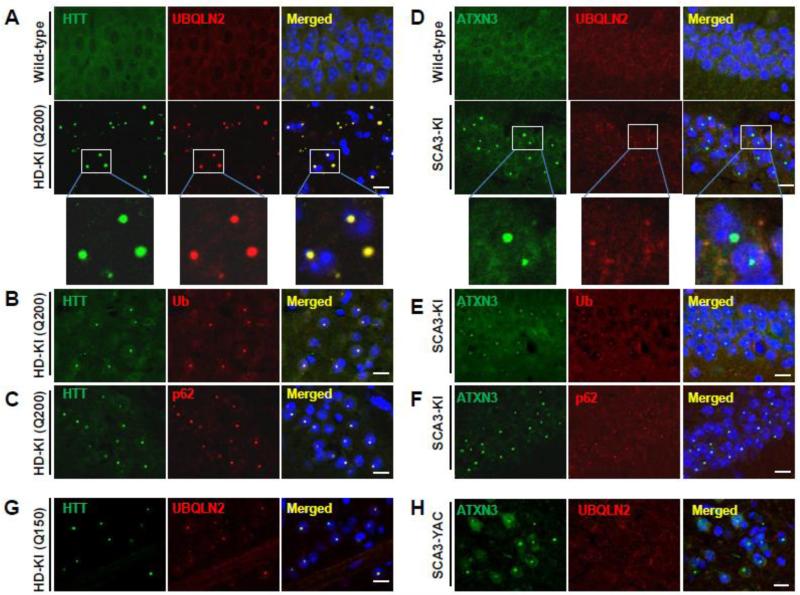Fig.2.
UBQLN2 localizes to inclusions in mouse models of HD but not SCA3. (A-C) Brain sections from 75-week-old heterozygous HD-KI (Q200) mice were double immunolabeled for (A) HTT and UBQLN2, (B) HTT and ubiquitin or (C) HTT and p62. UBQLN2, ubiquitin and p62 all localize to HTT intranuclear inclusions in the hippocampus. Scale bars = 10 μm. (D-F) Brain sections from 52-week-old homozygous SCA3-KI mice were double immunolabeled for (D) ATXN3 and UBQLN2, (E) ATXN3 and ubiquitin, or (F) ATXN3 and p62. UBQLN2 does not localize to SCA3 nuclear inclusions in the hippocampus whereas ubiquitin and p62 do. (G) Double labeling of HTT (green) and UBQLN2 (red) shows colocalization in nuclear inclusions in the striatum of a second HD model, the HD-KI (Q150) mouse, at 70 weeks of age. (H) Double labeling of ATXN3 (green) and UBQLN2 (red) indicates UBQLN2 is not recruited into SCA3 nuclear inclusions in the cortex of a second SCA3 model, homozygous SCA3 YAC mice, at 45 weeks of age. Scale bars = 10 μm.

